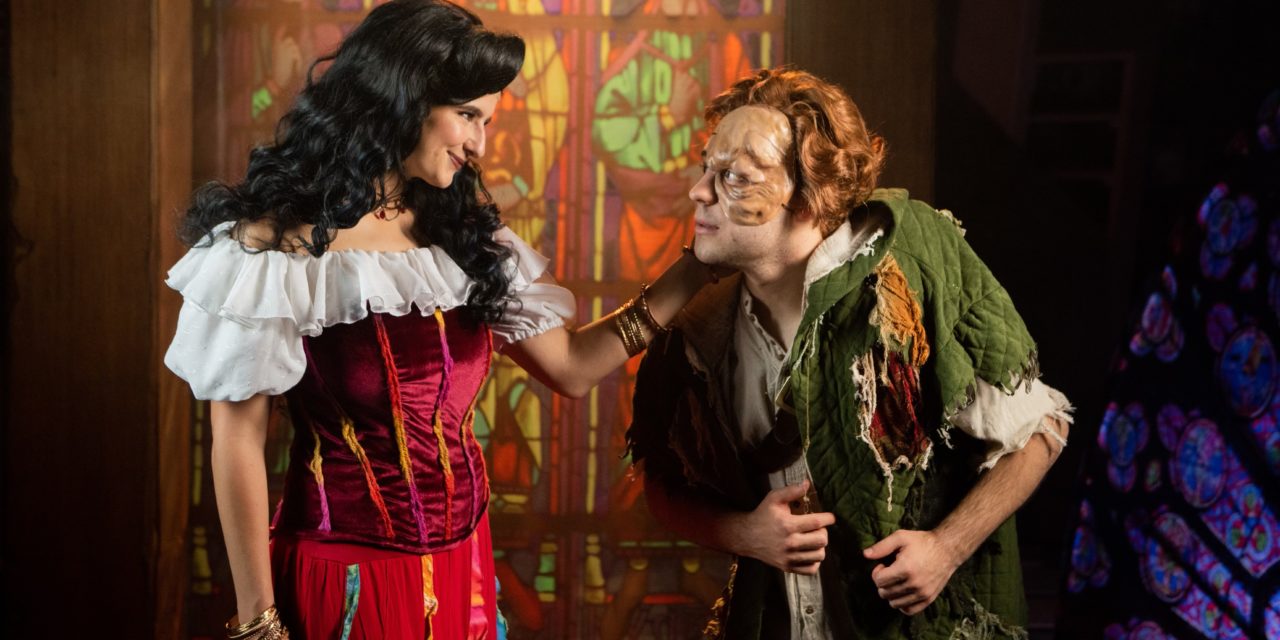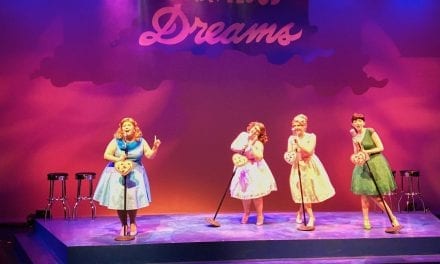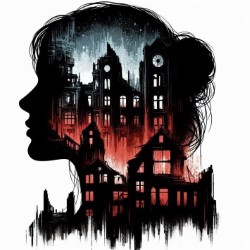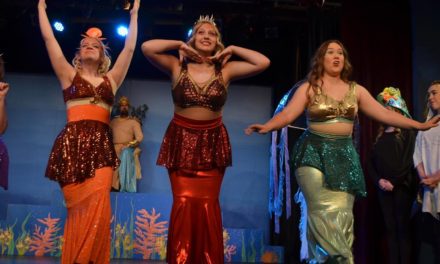OREM — David Paul Smith, director of The Hunchback of Notre Dame at the Hale Center Theater in Orem, was bullied as a child. Why is this relevant? Because during one of Smith’s hardest years, Disney released the film, The Hunchback of Notre Dame. Ridiculed and rejected, this story touched the young Smith deeply and altered the course of his life. Smith’s production, after years of anticipation, now graces the Hale’s stage with magnificent passion and meaning.

Show closes November 20, 2021.
Written by Peter Parnell with profound music by Alan Menken and lyrics by Stephen Schwartz, this rendition of Victor Hugo’s beloved story follows the life of a half-formed man who lives in the bell tower of Notre Dame. Cursed with the name of Quasimodo, he is kept hidden from Paris by his adoptive but cruel guardian, Dom Claude Frollo. Quasimodo, dreaming of a life outside of Notre Dame’s walls, finds himself venturing through a town festival, the Feast of Fools. When his identity is revealed and he falls in love with a gypsy, Esmeralda, his life is changed forever.

Left to right: Paul Cave as Claude Frollo, Chloe McLean as Esmerelda, and Mitchell Mosley as Quasimodo. Photo by Suzy O Photography.
I entered the theater and was immediately thrust into the story. The cramped space of the Hale has been innovatively transformed into the confining bell tower home of Quasimodo. This clever design by Cole McClure consists of bronze bells overhead with ropes falling to the stage, constantly bringing to mind the dark realities of the life of Quasimodo. Robed figures emerge in ghostly blue lights, contrasting with perfection to eerie yellow candles, as ominous voices surround the audience. The heavenly singing of the entire ensemble (under the supervision of their skilled music director, Kyle Harper) left me awestruck.
This lighting, designed by Joseph Governale, breathes life into this production. My favorite lighting detail is each gypsy escape, in which the stage rapidly flashes with mystical kaleidoscope colors near their exit point. Costume designs by Janet Swenson are flamboyant, a velvety variety of colors wrapping each of the ensemble. Particularly mesmerizing is the costume for Clopin, the storyteller who enchants the stage with sleeves full of trinkets and ribbons.

Mitch Mosley as Quasimodo. Photo by Suzy O Photography.
This gypsy ensemble bursts with a unified vivacity that is maintained throughout. “Topsy Turvey (Part 1),” genuinely incited fear in me as the ensemble forced Quasimodo to the floor, mocking him with wildly careless laughter. My only disappointment with the ensemble is the trend I noticed in the females, appearing uncomfortable with sexuality. This is seen in “Rest & Recreation,” “Rhythm of the Tambourine,” and “Hellfire.” I understand it can be hard to convey sexuality in front of a Utah audience, but it would even be better if they at least danced playfully or joyfully, as opposed to displaying clear discomfort.
An example of this was the portrayal of Florika by Brittni Smith. As she is brought into Notre Dame, she is unconving, showing no real remorse for the consequences of her partnership with Jehan. Smith shines, however, as a gargoyle, producing tender moments of connection during “Out There” and as she caresses the face of her beloved Quasimodo.
The ridiculously large heads of these gargoyles fall to the side, cover mics, and cast shadows over the characters’ eyes, but the delightful gargoyle ensemble persists despite these setbacks. Kyle Baugh, in particular, uses his clumsy bobblehead to his advantage, jabbing Quasi, dodging ropes and kissing another gargoyle with adorable awkwardness.

Paul Cave as Claude Frollo. Photo by Suzy O Photography.
The most comfortable actor on stage has to be Keith Allen as Clopin. Each movement is instinctual, from his jovial jigs to his passive eyerolls. Another actor with remarkable presence is Scott Hendrickson as Frederic. With a clenched jaw and an immovable demeanor, Hendrickson is focused with intense stillness.
Contrasting this intimidating nature is the portrayal of Phoebus by Brian Smith. While a convincing womanizer, his flimsy wielding of a sword proves unimpressive. Brian Smith’s portrayal of Phoebus improves in the second act as he engages intently with Esmerelda, speaking to her with genuine, heartbreaking affection. This lovely acting seems thrown away, however, when Chloe McLean as Esmeralda performs two-thirds of the ballad “Someday” towards an imaginary audience, as opposed to engaging with her real life scene partner. This was the most disappointing moment of the production. Yet, McLean also blossoms in the second act as she vocalizes agonizing passion as she burns at the stake. Esmerelda’s genuine cries as she was attacked were touching, as McLean abandoned her use of an occasional fake-sounding acting voice. However, I could not deny the chills sent down my arms as her gorgeous vocal cords broke through the prayers of the citizens during “God Help the Outcasts,” proving her undeniable talent.
Mitchell Mosley as Quasimodo is sincerely loveable, tender, and a dreamer. His slow blinking and curling fingers resemble more of a socially challenged child than a deformed monster, making him relatable and endearing. Mosley’s masterful comedic timing and enduring passion throughout are fantastically gratifying. I could not hide the smile that broke across my face during his first solo, “Out There,” and my only wish is that he would lift his face more so the audience can see his gorgeous acting. He occasionally had a pitchy note, but each instance was forgivable due to Mosley’s phenomenal execution of character.
Paul Cave executes the absolute best portrayal of Claude Frollo that I have ever seen or heard. Cave’s Frollo is not creepy, but honest and genuine in his villainy who is still sympathetic. Cave’s development as a character is smooth and perfect. Thanks to Cave, “Hellfire” is the climax of the production. In Frollo, the play’s themes are fitting for Utah culture, illustrating that even the most well-intentioned people can be corrupted and sin.
There were two directorial choices that left me disappointed in the second act. The first occurred when Quasimodo casually takes Esmeralda from the burning stake as the guards cower in terror for no apparent reason, for Quasimodo gives no reason for them to be afraid. Secondly, I was baffled by Esmerelda’s cause of death. Was it smoke inhalation? Intense burning of the legs? The direction and acting left no indication of how she died.
My last small gripe with the production is the nuisance of a pointless set piece. While Frollo (my favorite character in this production) and Esmeralda confront each other in the chambers of Notre Dame, two parchment-like sheets of stained glass are lowered. As I and others stretched our heads in a failed attempt to see the gifted actors on stage, I concluded that obstructing the audience’s view of the scene was avoidable.
Hale Center Theater Orem’s production of The Hunchback of Notre Dame is phenomenal. My husband and I loved our experience. Audiences of all ages and backgrounds will be enchanted and moved by the deep messages presented through lively performers and skillful design work, despite the show’s minor flaws. The Hale Center Theater Orem’s production of The Hunchback of Notre Dame is a must-see.

This review was supported by a generous grant from the Orem CARE program.





